
The municipality of Bistrița, through the Bistrița City Hall, has installed 18 multi-parameter environmental sensors within the “Zero Carbon Cities” program financed by the European Union through UrbAct. The sensors used are of two types, uRADMonitor A3 and uRADMonitor SMOGGIE-CO2, that have received worldwide recognition for outstanding technical performance. uRADMonitor supported the effort of Bistrita City Hall through a preferential discount, granted through the “Air for Bistrita” campaign to facilitate the installation of sensors at community level.
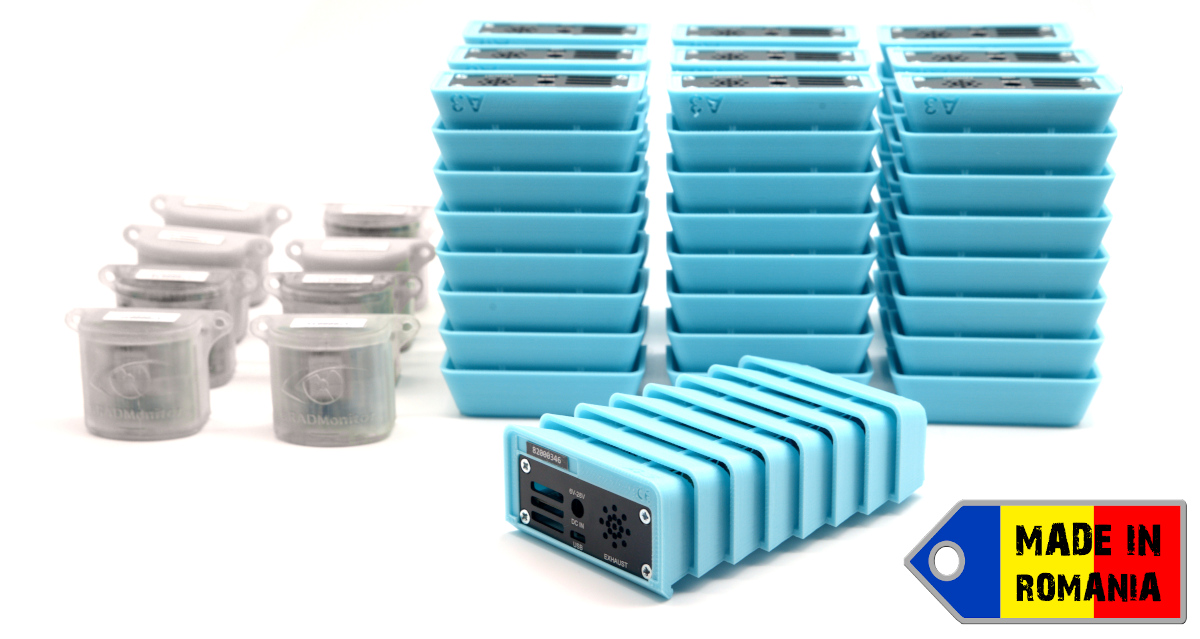
All these sensors monitor the CO2 level, in order to be able to follow the fulfillment of the municipality’s commitments to reduce the long-term CO2 footprint, but also other parameters of interest. According to its data sheet, each uRADMonitor A3 device monitors 10 indicators which include: Air temperature, humidity, Dust concentration PM1, PM2.5, PM10, Volatile organic compounds, Formaldehyde concentration, Ozone, Carbon dioxide and noise level.
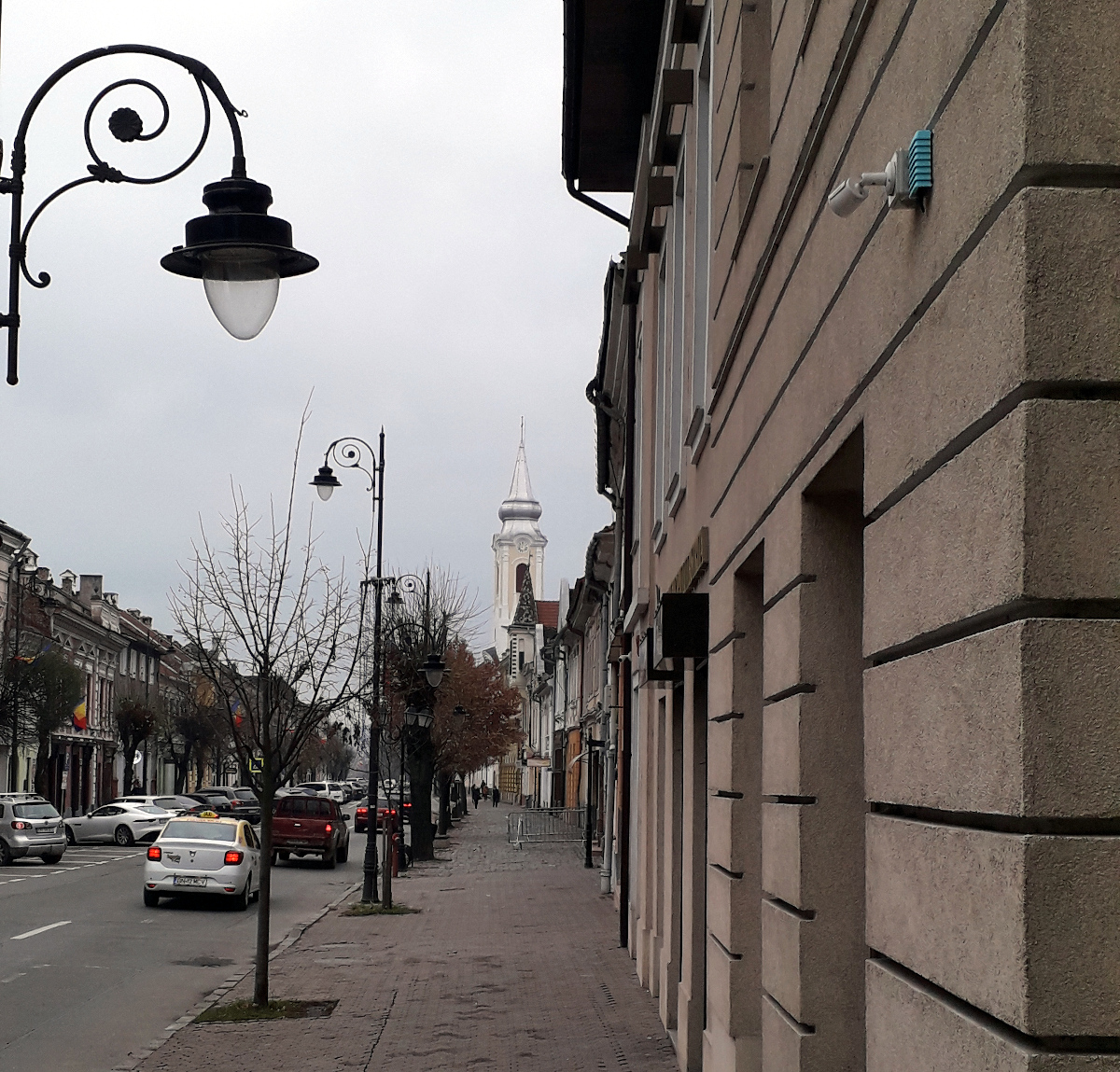
Thus, in addition to CO2, factors related to air quality are monitored and can have an impact on the health of the people of Bistrita. Here we mention the concentration of suspended particles (PM1, PM2.5, PM10), the concentration of formaldehyde, the level of volatile organic compounds. Real-time information warns vulnerable sections of the population to reduce their exposure to polluted air, where appropriate:
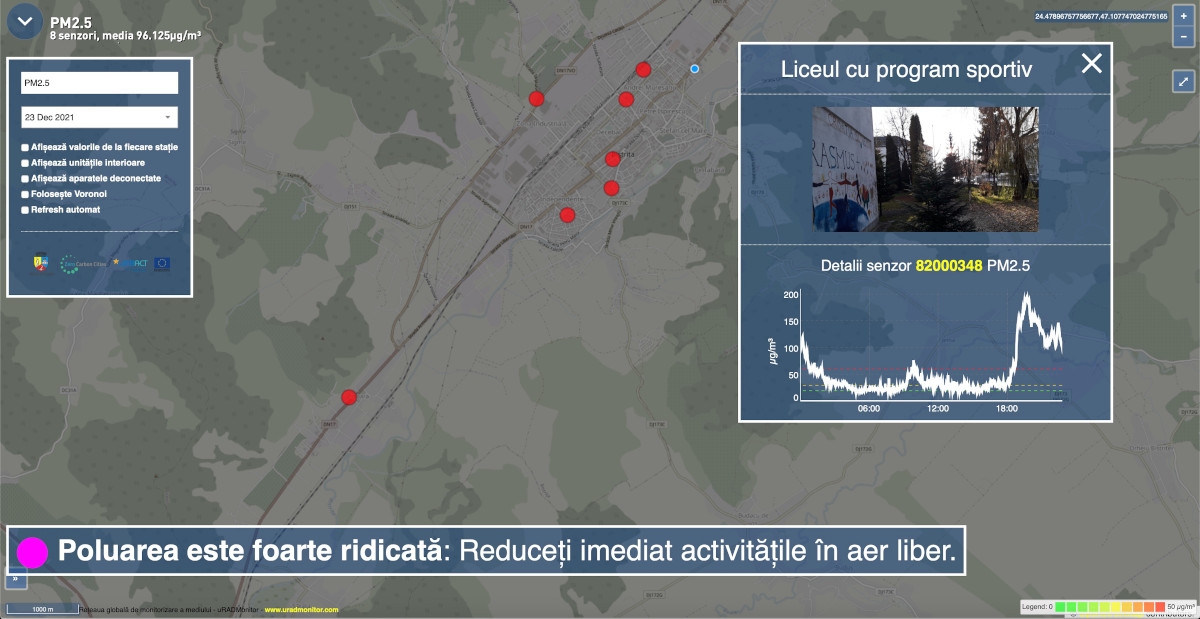
The noise level helps to build a noise map at the city level but also to estimates of traffic in the city. This is how city-level noise looks like in the last week of 2021. The holidays appear with low noise values, corresponding to lower traffic. Each color represents an independent sensor:
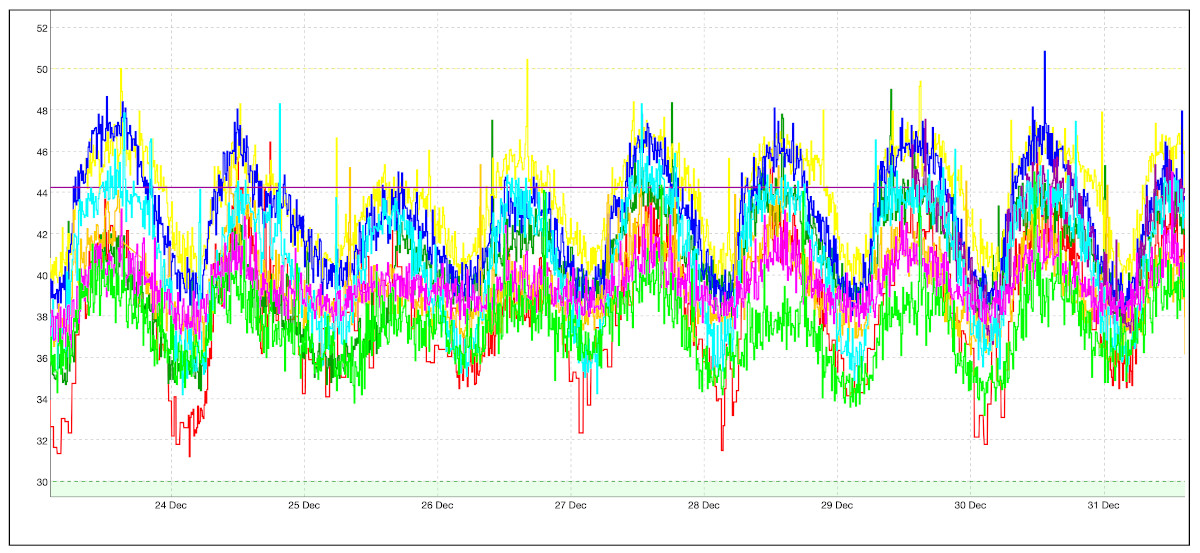
An element of novelty in this project was the installation of a number of sensors in schools in Bistrita. Thus, several classrooms in kindergartens, schools or high schools have been equipped with sensors that monitor the concentration of CO2 and indicate it discreetly in the form of a color LED.
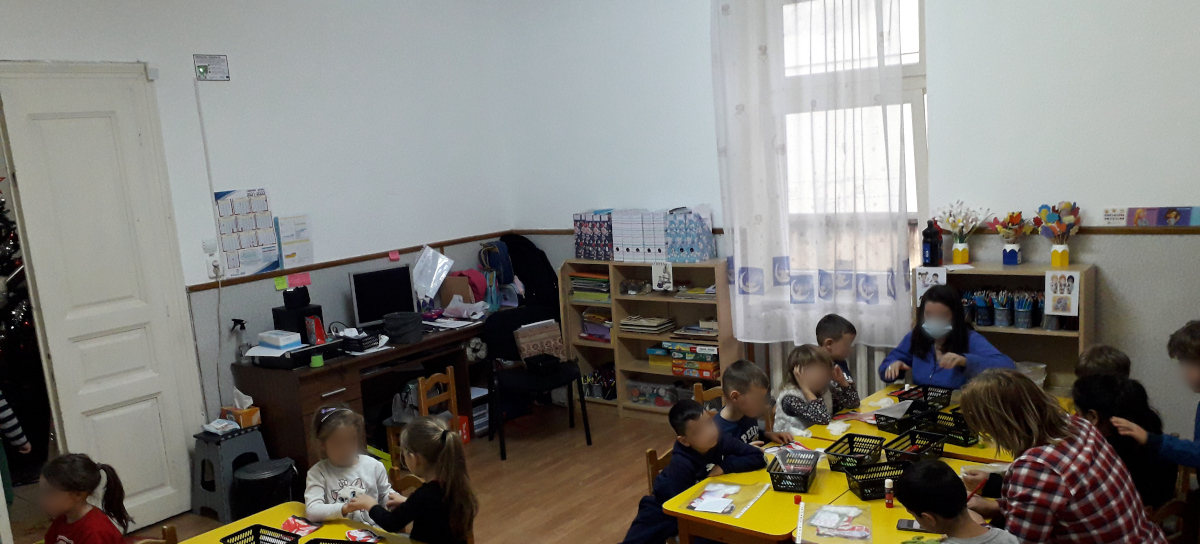
In all these cases there is an increase in the concentration of CO2 during the program hours, when the rooms are populated. Periodic ventilation is also observed on the temperature graph: when it is ventilated, the temperature in the room decreases (its winter) but the CO2 concentration also decreases.
In the example below, the teachers were not specifically instructed to ventilate, but did so in response to the red LED on the sensor. Following the data, it can be seen that the air immediately gets better and the CO2 concentration decreases. At the same time in the room, Smoggie’s LED turns green. Children thus have a healthier environment for carrying out activities. Otherwise, carbon dioxide can, in high concentrations, impair cognitive function and reduce the power of concentration or even cause headaches.
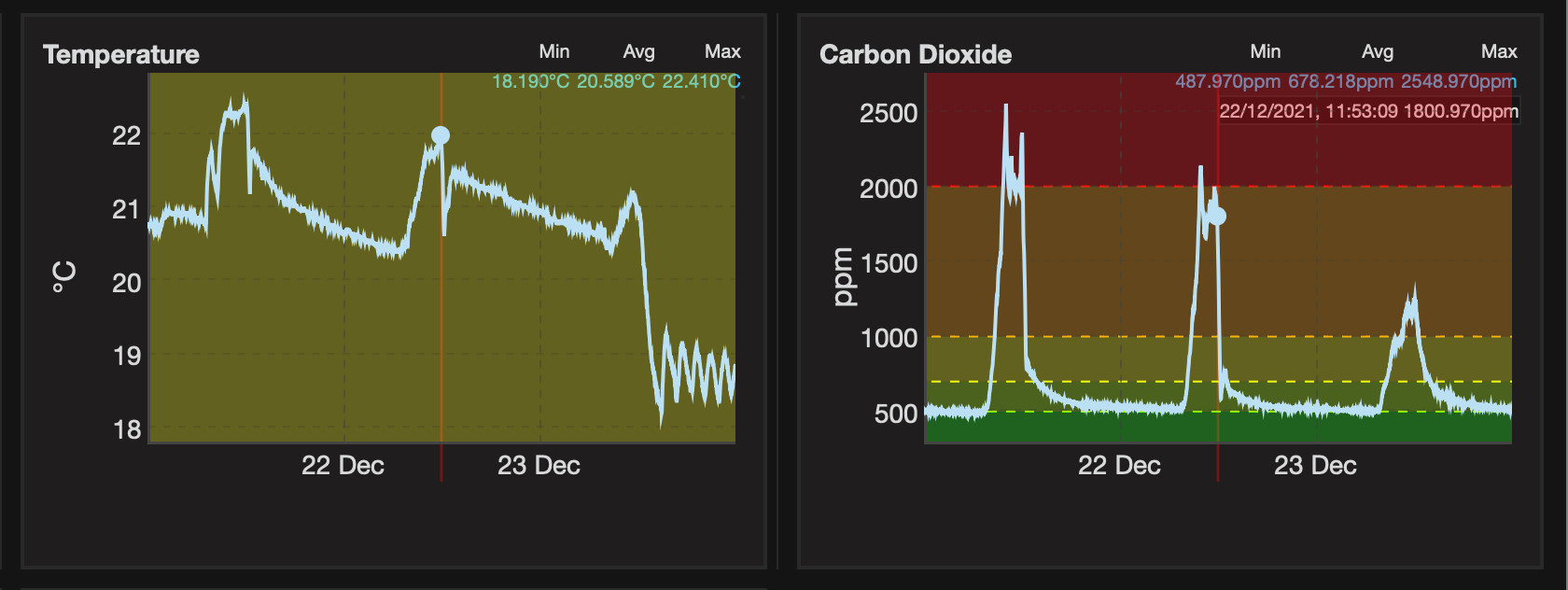
Similarly, at a school in Valea Lupului Iași, a study was conducted on the increase of CO2 in a classroom, correlated with the number of students present and the frequency of ventilation. Conclusions on the values achieved were also published, as well as recommendations on limiting the growth of CO2 that negatively influences the activity of children in the classroom.
This mechanism encourages the early formation of healthy habits, the understanding of the causes behind the pollution but also the education of the young generation in the direction of a sustainable behaviour, for a cleaner, greener future. Parents can also monitor the children’s situation in school in real time and become part of the pollution control mechanism. Fewer cars with the engine running in the school parking lot and better air in the cities. Thus, slowly, through small steps, the effort increases to the level of the municipality, contributing to an improvement of the long-term quality of life.
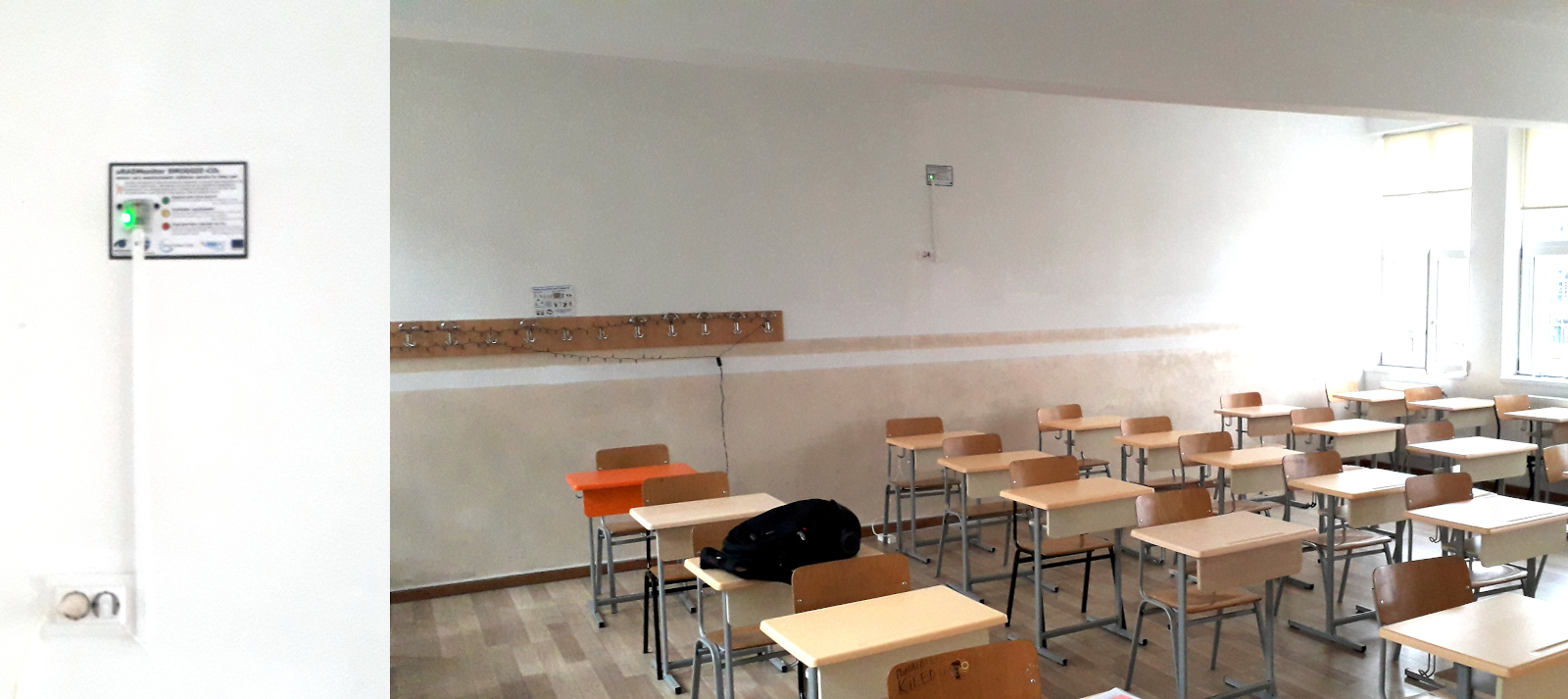
Because we know that people become more responsible and more aware when they have access to transparent, real-time data, we continue our campaign with the purchase and installation of 18 air pollution sensors, outdoor in traffic areas of the city, but also indoor, in a few schools. The data from the sensors will be available on mobile application and also on a specific online platform, so each member of the community can be involved in the monitoring effort. Having this data people and students understand the cause and effect of becoming themselves part of the mechanism for combating pollution through Individual consumption decisions: transport, energy, expenses, products with harmful impact etc.
Because we know that people become more responsible and more aware when they have access to transparent, real-time data, we continue our campaign with the purchase and installation of 18 air pollution sensors, outdoor in traffic areas of the city, but also indoor, in a few schools. The data from the sensors will be available on mobile application and also on a specific online platform, so each member of the community can be involved in the monitoring effort. Having this data people and students understand the cause and effect of becoming themselves part of the mechanism for combating pollution through Individual consumption decisions: transport, energy, expenses, products with harmful impact etc.
We hope that such activities will resonate among the citizens and contribute, through small gestures, to the transition to “Bistrita, Zero Carbon City”.
codemore code
~~~~